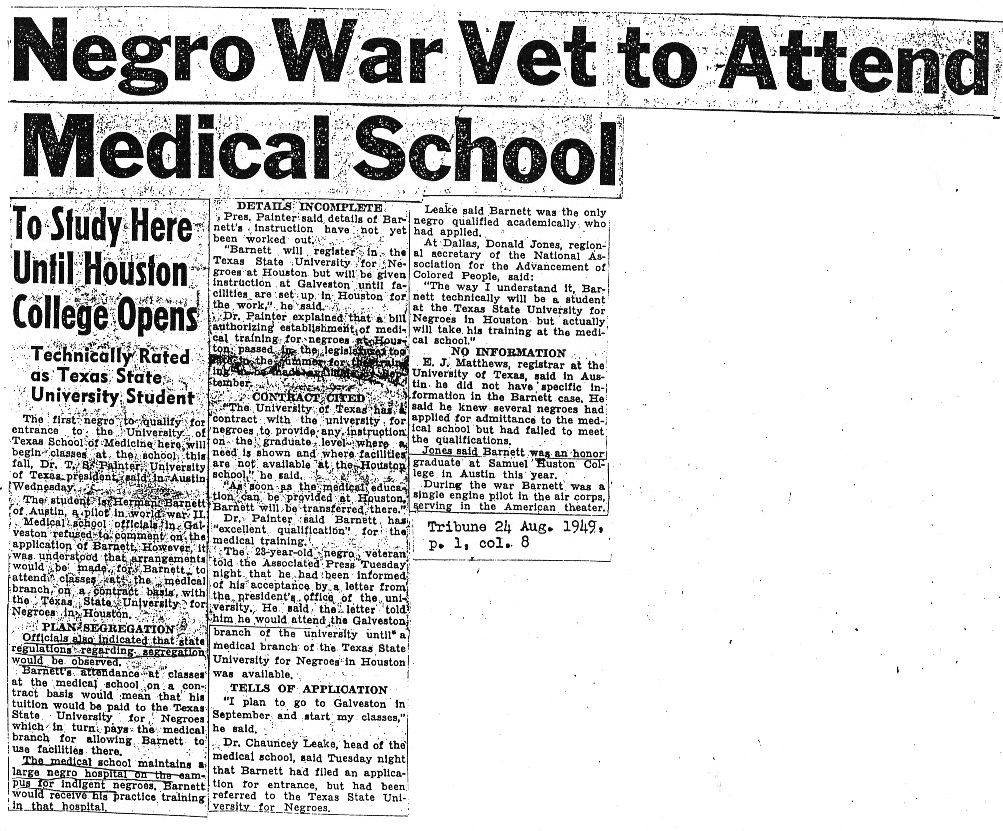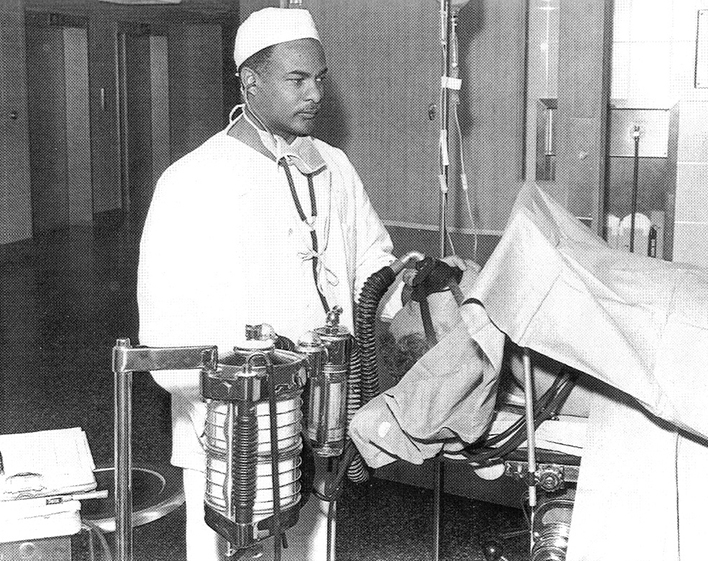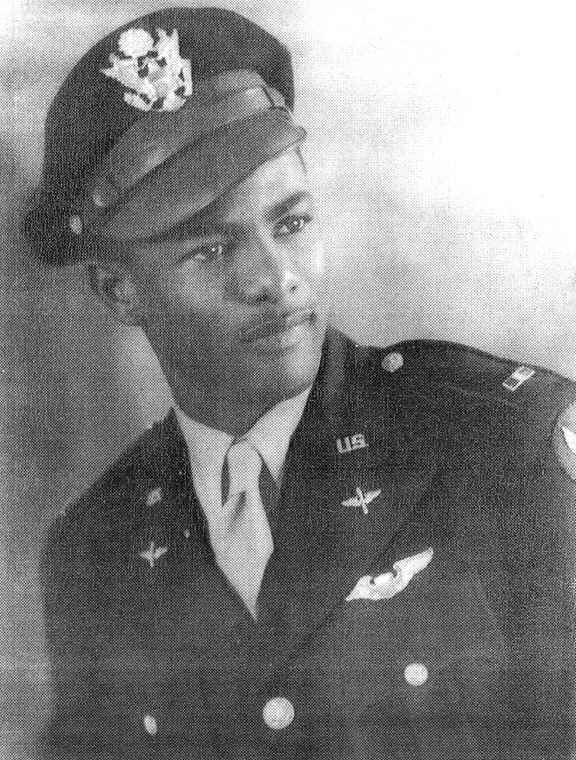
In 1949, five years before the landmark Brown v. Board of Education case, which called for the desegregation of schools in the south, the University of Texas Medical Branch admitted the first African-American student into medical school in the state of Texas.
His name was Dr. Herman A. Barnett and this became the beginning of many “firsts” that Barnett would accomplish as he broke through color barriers.
The National Association for the Advancement of Colored People encouraged Barnett to attend UTMB to help desegregate the field of medicine. Although he had been accepted to all-black medical schools Howard University College of Medicine and Meharry Medical College, Barnett courageously agreed and changed the course of history in Texas. But his admittance was no easy feat.
Supporters of Barnett threatened to file a lawsuit against the state if Barnett wasn’t admitted into the university. Fearing the lawsuit would undo Texas segregation laws, the state agreed to admit Barnett through a covert operation, of sorts.
Realizing his admittance would break segregation laws, the NAACP and the state of Texas concocted a plan to have Barnett enrolled as a student of Texas State University for Negroes, known now as Texas Southern University, while he actually attended medical school at UTMB. To calm any fears of desegregation, the state told  newspapers Barnett’s admittance at UTMB was only temporary and that he would take classes at TSU as soon as medical classes were available.
newspapers Barnett’s admittance at UTMB was only temporary and that he would take classes at TSU as soon as medical classes were available.
The plan worked and Barnett began classes at UTMB, under the guise of a TSU student.
However, the ruse didn’t last long. By the fall of 1950 Barnett was officially enrolled at UTMB due to the refusal of the Department of Veteran Affairs, who paid Barnett’s tuition, to recognize the TSU arrangement.
Once Barnett gained admittance to UTMB, the struggle wasn’t over. Although the state was willing to allow Barnett to attend the university, not everyone was ready for this change. In fact, he wasn’t allowed to sit in the classroom for some courses because of his race and was even beaten by a Galveston County sheriff’s deputy.
But Barnett excelled in spite of the challenges he faced.
In his sophomore year he earned the Charles A. Pfizer Award and in 1953 he graduated cum laude. He continued his residency at UTMB in general surgery and went on to train in anesthesiology at St. Joseph Hospital in Houston.
Barnett went on to practice at several hospitals and served as chief of surgery at St. Elizabeth’s, Riverside General and Lockwood General hospitals. During his career as a surgeon and anesthesiologist he continued to build upon his skills as he completed a fellowship with the American Cancer Society and the National Medical Fellowship.
In 1968 Barnett became the first African-American to serve on the Texas State Board of Medical Examiners, a governor-appointed position. He also became the first African-American elected as president of the Houston Independent School District Board of Education in 1973. The school district later named the Herman A. Barnett Stadium in his honor.
Prior to attending UTMB, Barnett was a fighter pilot in World War II and a member of the Tuskegee Airmen. He continued to fly in his free time throughout his medical career. In 1973, he was killed when his plane crashed at an airshow sponsored by an organization of African-American pilots from the war. He was 47.
Following his death Barnett’s friends established the Herman A. Barnett Memorial Award, which is an annual scholarship for UTMB medical students.
 UTMB honored Barnett with the Ashbel Smith Distinguished Alumnus Award, the school’s highest alumnus honor, and established the Herman Barnett Distinguished Endowed Professorship in Microbiology and Immunology.
UTMB honored Barnett with the Ashbel Smith Distinguished Alumnus Award, the school’s highest alumnus honor, and established the Herman Barnett Distinguished Endowed Professorship in Microbiology and Immunology.
Barnett left a wife and five children upon his death. His son Marcus Barnett is an award-winning physician in Houston and an alumnus of UTMB — a feat made possible by his father’s courageous actions more than 65 years ago.
Today UTMB is one of the top non-historically black colleges and universities for African-American graduates — a reality that wouldn’t have been possible without Barnett’s sacrifice.